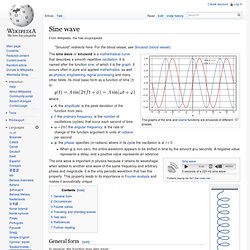

Music Cognition. In scientific studies of music, what’s missing is the culture. 1789 drawing of Mozart by Doris Stock Last week, Time treated readers to an explanation of what makes scary music scary.

The short answer: our monkey brains. Taking the famous two-note theme from Jaws as Exhibit A, the article unleashed a whole lot of Science: “Those irregular minor chords trigger the same instinctual response a mama marmot feels when her babies are threatened.” Katy Waldman is a Slate assistant editor. Follow her on Twitter. Follow The story went on to cite “biologically-ingrained reasons why sudden, dissonant sounds and minor chords make us apprehensive,” and to propose a link between John William’s “chilling, crescendoing minor chords” and “the screeches of young frightened animals.” The piece’s claims aren’t helped by the carelessness with which it tosses around terms from musical theory. Consider two studies cited right here on Brow Beat.
Meanwhile, whether perceptions of consonance and dissonance are learned or innate is more of an open question. Why Music Gives You The Chills. Music: It's in your head, changing your brain. Bassist Victor Wooten says you don't need to start with the rules of music in order to play an instrument.

When you can't get a song out of your head, it means neural circuits are stuck in a loop Music, like sex, drugs and food, release the brain chemical dopaminePeople tend to agree on the emotions they hear in musicVictor Wooten, a famous bassist, approaches music as a language (CNN) -- Michael Jackson was on to something when he sang that "A-B-C" is "simple as 'Do Re Mi.'" Music helps kids remember basic facts such as the order of letters in the alphabet, partly because songs tap into fundamental systems in our brains that are sensitive to melody and beat. That's not all: when you play music, you are exercising your brain in a unique way. "I think there's enough evidence to say that musical experience, musical exposure, musical training, all of those things change your brain," says Dr. Making music sound 'better' Ear worms Scientists think of these annoying sound segments as "ear worms.
"
Joplin, Scott in Oxford Music Online. Sine wave. The graphs of the sine and cosine functions are sinusoids of different phases.

The sine wave or sinusoid is a mathematical curve that describes a smooth repetitive oscillation. It is named after the function sine, of which it is the graph. It occurs often in pure and applied mathematics, as well as physics, engineering, signal processing and many other fields. Its most basic form as a function of time (t) is: where: The oscillation of an undamped spring-mass system around the equilibrium is a sine wave. The sine wave is important in physics because it retains its waveshape when added to another sine wave of the same frequency and arbitrary phase and magnitude.
General form[edit] In general, the function may also have: which is , if the wave is moving to the right , if the wave is moving to the left [1] The wavenumber is related to the angular frequency by:. where λ is the wavelength, f is the frequency, and v is the linear speed. Occurrences[edit] A cosine wave is said to be "sinusoidal", because.
Diana Deutsch - Diana Deutsch's Web Page. Online Tone Generator - Free, Simple and Easy to Use. Definition of pitch. Free Audio Software, audio tone generating software.